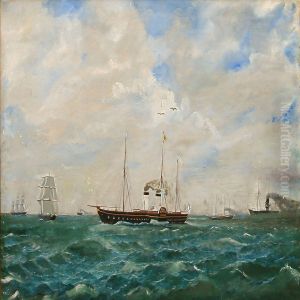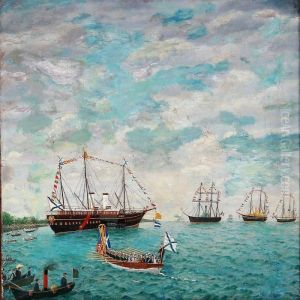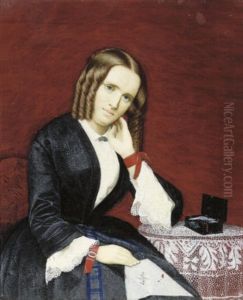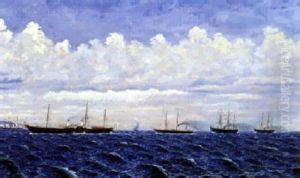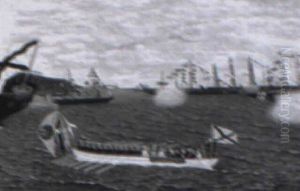Henrik Ludvig Galster Paintings
Henrik Ludvig Galster was a Danish painter, primarily known for his marine paintings and depictions of ships. Born on January 24, 1861, in Copenhagen, Denmark, Galster was the son of a master joiner. He grew up in a time when Denmark was undergoing significant changes, transitioning from the absolute monarchy that had been in place for centuries to a constitutional monarchy. Galster's era was marked by the modernization of Denmark and the development of Copenhagen as a significant European capital.
Galster received his artistic training at the Royal Danish Academy of Fine Arts in Copenhagen, where he studied from 1877 to 1884. During his time at the Academy, he was influenced by the teachings of Frederik Vermehren, a genre painter who emphasized the importance of careful study and realistic detail. Galster's focus on marine subjects can be partly attributed to Denmark's rich seafaring history and his personal fascination with the sea.
Throughout his career, Galster exhibited his works at various venues, including the Charlottenborg Palace, home of the annual Charlottenborg Spring Exhibition, a prestigious event that showcased contemporary Danish artists. His paintings often depicted ships and the sea with a high degree of technical skill, capturing the interplay of light and water with a meticulous attention to detail.
Galster's work was well-received, and he gained a reputation for his ability to portray the sea in different weather conditions and times of day. His paintings are characterized by their realism and often evoke a sense of the calm and majesty of maritime life. In addition to oil paintings, Galster also created watercolors, a medium that allowed him to explore the subtleties of light and color with greater fluidity.
Henrik Ludvig Galster passed away on April 15, 1939, in Copenhagen. Although not as widely known internationally as some of his contemporaries, his contribution to Danish art, particularly in the genre of marine painting, remains significant. His works can be found in several Danish museums and continue to be appreciated by art lovers, especially those with an affinity for maritime history and the sea.
